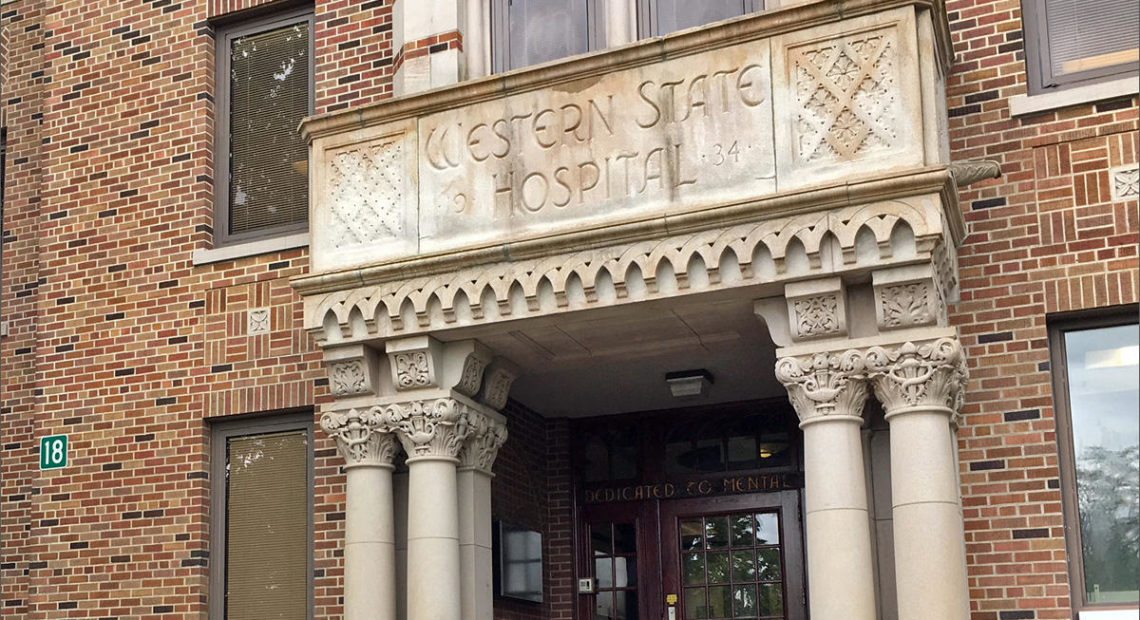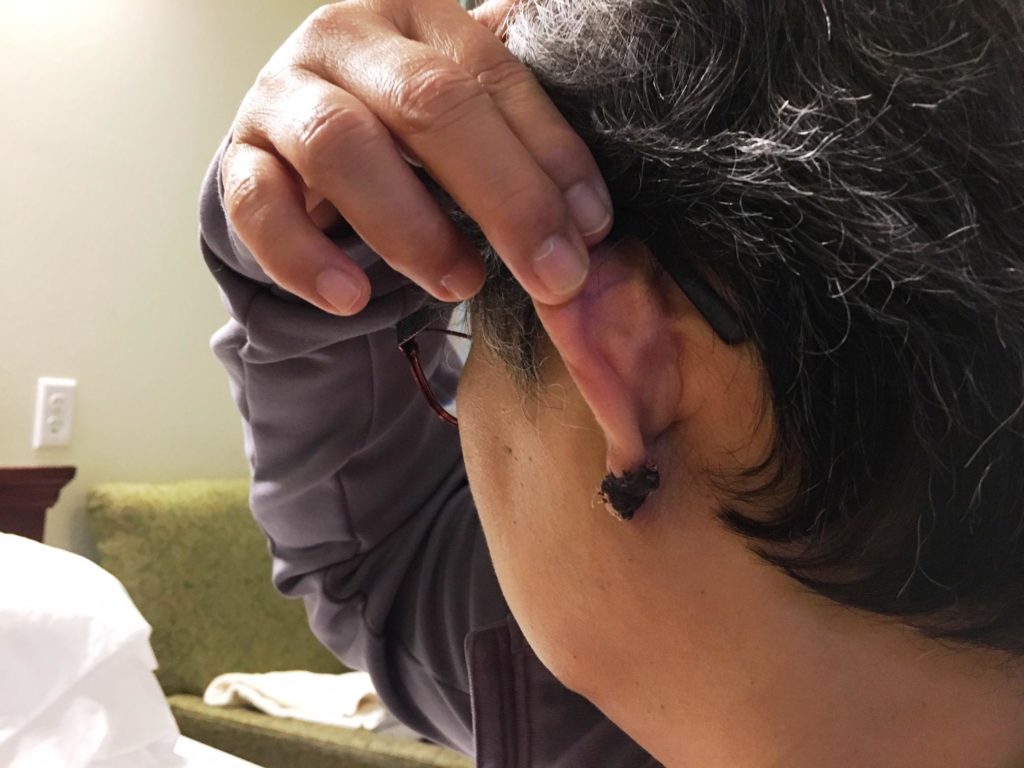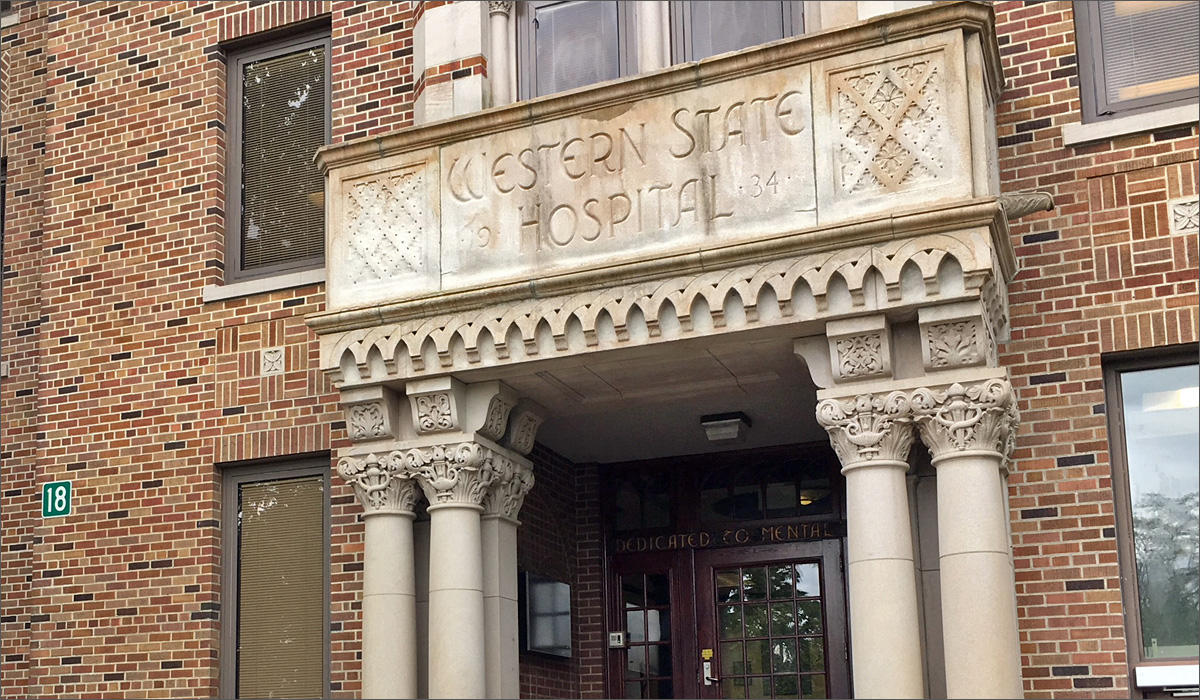
After Attacks, Western State Hospital Will Open New Ward For Most Violent Psychiatric Patients
READ ON
Nearly a year-and-a-half after a series of vicious patient-on-staff attacks, including one that cost a nurse part of her ear, Western State Hospital is poised to open a new unit to treat its 10 most violence-prone patients.
The Specialized Treatment, Assessment and Recovery (STAR) ward is slated to begin accepting patients next Monday.
Candidates for the intensive treatment program will be selected based on the severity or frequency of their assaultive behavior.
“We want to make sure that we’re picking the people that are injuring staff members,” said Jenise Gogan, the director of community transition for Washington’s Behavioral Health Administration.
Gogan said the majority of assaults in the hospital are committed by a small number of typically younger patients with co-occurring disorders who will be the prime focus of the STAR ward.
Once admitted, patients will be provided individualized treatment designed to address the most common underlying causes of violence among psychiatric patients: trauma, psychosis, co-occurring substance use disorders and anti-social personality disorder.
Employing evidence-based practices, the unit staff will work to assess and stabilize the patients, treat the underlying cause of their violence and reduce their aggressive behaviors. Patients will stay on the STAR ward for up to 90 days, but they won’t leave the ward until they’ve been violence-free for 30 days, Gogan said.

Berni, a nurse at Western State Hospital, shows where a patient bit off her earlobe during an assault in 2018. CREDIT: Austin Jenkins/N3
The goal of the program, which borrows from violence assessment and treatment guidelines developed in California, is to reduce by half the number of violent incidents committed by these assaultive patients. But progress will also be gauged by a reduction in the severity of their outbursts.
“So if before you were hitting people so hard they had to go to the hospital and then this week you just screamed and punched a wall and spit on someone, that’s progress,” Gogan said.
In addition to individual trauma therapy, patients in the STAR ward will have access to 12 hours of programming seven days a week in what the hospital describes as a “highly structured setting.”
In addition to the STAR ward, Western State Hospital plans to open in May a new 20-bed “step-up” unit to serve as a bridge for patients transitioning from the STAR ward back to one of the hospital’s regular civil wards.
Located in Lakewood, Western State Hospital, with roughly 850 beds, is the state’s largest psychiatric facility.
The hospital serves both civil, or non-criminal, patients and forensic patients who come through the criminal justice system. The STAR ward will serve civil patients.
As part of Gov. Jay Inslee’s five-year plan to decentralize psychiatric care in Washington, the hospital is transitioning from serving mostly civil patients to serving primarily forensic patients. As part of that transition, civil wards are being converted to forensic wards.
Aging and long-troubled, Western State Hospital lost accreditation in June 2018 and with it $53 million a year in federal funding.
That August and September, three nurses were assaulted resulting in serious injuries. In two of those cases, the nurses were pushed to the floor and stomped. One victim was so bloodied by the attack that a coworker thought she was dead.
In the third attack, the patient leapt over a Plexiglas divider and tackled nurse Bernia Garner. The patient then pushed her to the ground and bit off her earlobe.
In March of last year, L&I fined Western State Hospital $4,900 for workplace safety violations stemming from those assaults.
Garner and three other staff members, who were all assaulted by the same patient, sued the state. Their trial is set for this September. In a statement, Garner’s attorney, James Beck, pointed to a 2015 agreement between Western State Hospital and the Department of Labor and Industries (L&I) that required the hospital to take a number of steps to improve staff safety.
“While all of Washington is hopeful that the changes Western State Hospital is announcing in 2020 will be effective …. There is no reason why these modifications had to wait until a number of staff and patients suffered life changing injuries.”
As part of its 2015 agreement with L&I, Western State Hospital planned to open a psychiatric intensive care unit, also known as a PICU to serve violent patients. But that unit was never funded.
Following the 2018 assaults, hospital administrators announced a plan to enclose all nurse stations and open the STAR ward.
Since 2018, the number of patient-on-staff assaults has fluctuated month-to-month while the number of staff injuries has generally declined. For instance, in June 2018 there were 109 patient-to-staff assaults resulting in 55 staff injuries. By comparison, in November 2019, there were 84 assaults resulting in 38 injuries — or a 30-percent reduction.
Funding for the STAR ward and the “step-up” unit is pegged at $22 million initially and was included in the current two-year state operating budget. In preparation for next week’s opening, the STAR ward has been retrofitted to reduce the risk of patient suicide. In addition, a video camera has been installed to capture any incidents of violence.
Operating both units will require a total of 104 staff, including 66 new positions ranging from custodians to psychiatrists. On the STAR ward, the nurse-to-patient ratio will be one-to-three as compared to one nurse for every 10 to 15 patients on a regular civil ward.
Gogan said staff will have the ability to isolate and restrain patients, but added that the “number one intervention” will be to identify signs of agitation early with the goal of intervening before a patient becomes violent.
“We’re prepared for it if we need to, we’re not a fan of having to do it,” Gogan said.
Selection of the first 10 STAR ward patients was still being finalized on Wednesday, but the most recent list included six men and four women, according to Gogan.
If successful, she said the plan is to expand the STAR ward concept.
Related Stories:

Hundreds of children affected by sudden Head Start closures in Central Washington
More than 400 children in Central Washington are without educational support services after federal funding did not arrive. Dozens of staff members were also dismissed.

Study in the works on effects of Tacoma’s Landlord Fairness Code
Tenants and landlords will soon have a chance to voice their opinions on how Tacoma’s new tenant protections have impacted them.
It’s been nearly two years since voters here approved the Landlord Fairness Code. The regulations, ranging from a $10 cap on late fees to a ban on economic evictions during certain times of the year, were an attempt to address increased rents and evictions by Tacoma For All, an advocacy organization for tenants and working class Tacomans.

Kennewick finds ‘forever chemicals’ in its drinking water for the second spring in a row
For the second spring in a row, Kennewick has found “forever chemicals” in its drinking water that are above Washington state’s standards.













